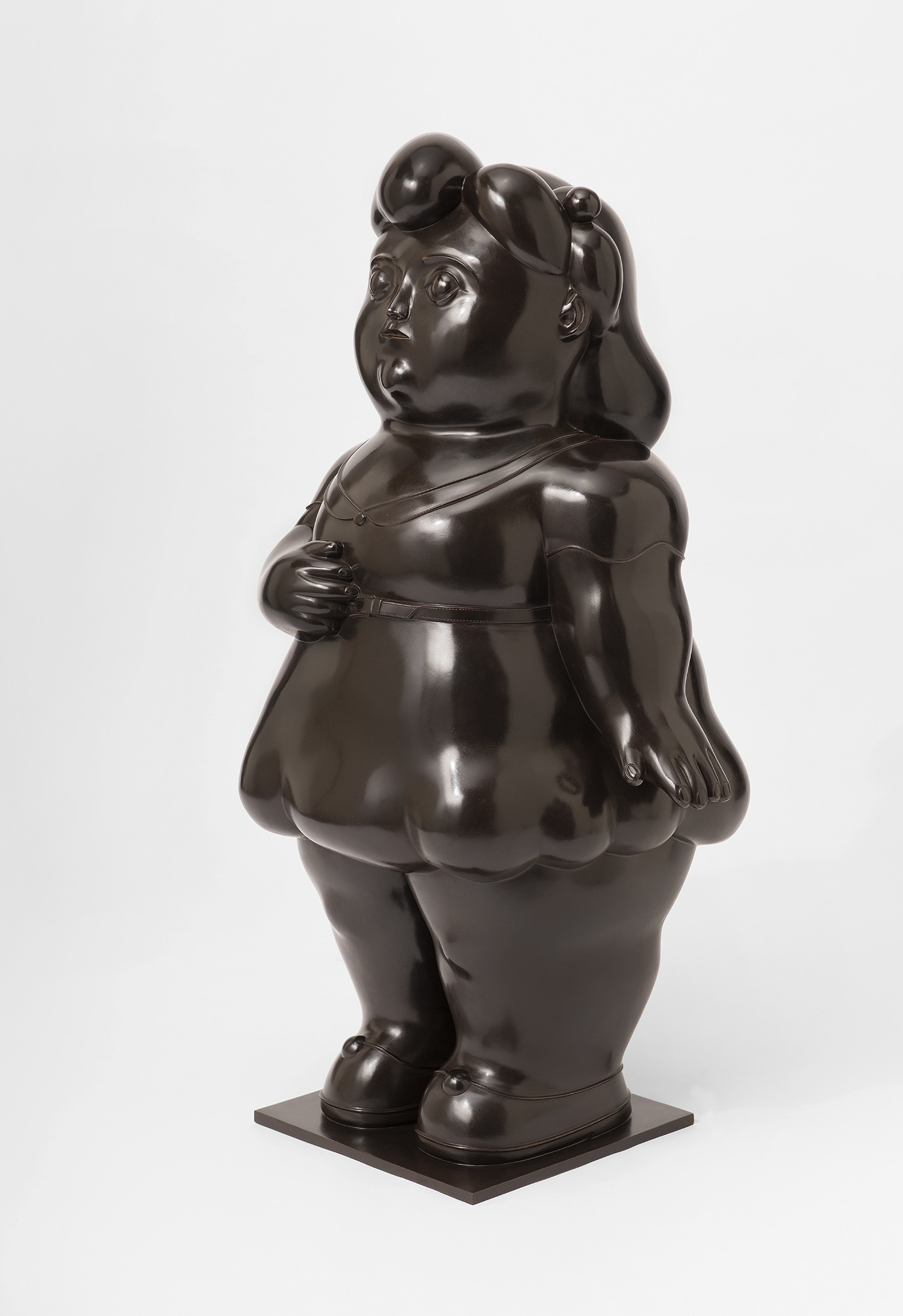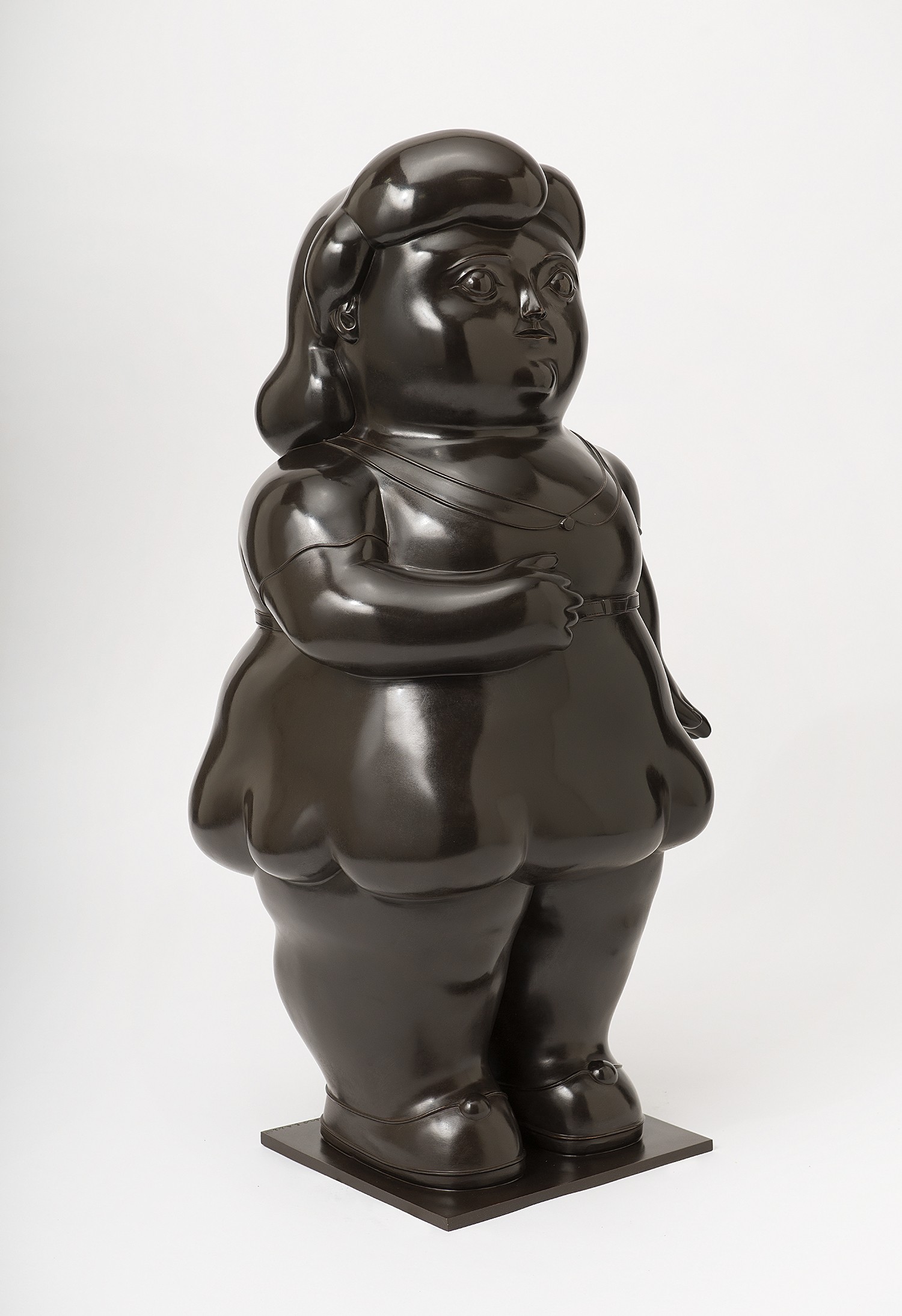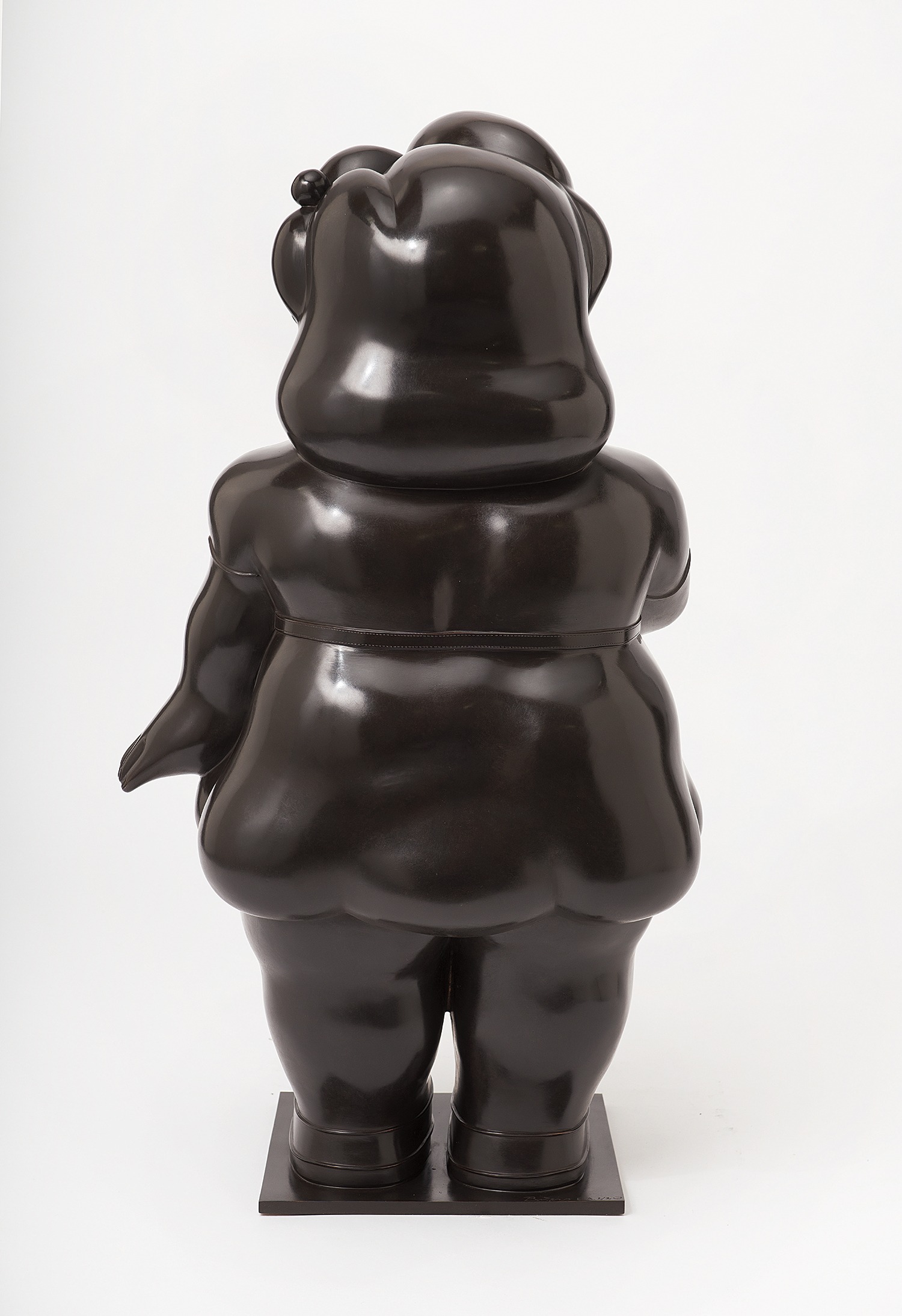









10Ο
Fernando Botero
Niña
Full-Cataloguing
Although Botero had experimented with sculpture as early as 1963, it was after his 1973 move to Paris that he had truly begun to explore the medium. Indeed, half a decade before Niña was created, in 1976-77, he essentially abandoned painting in favour of sculpture. In 1983, only two years after Niña was created, Botero’s love of sculpture would even lead him to acquire properties in Pietrasanta, next to one of the famous quarries whose marble was used by Michelangelo.
This reveals the way in which Botero’s works are underpinned by a conscious communion with the Old Masters of Renaissance Italy. It was, after all, during his time in Florence in the 1950s that he had begun to consolidate his style, abandoning the fireworks of conspicuously and self-consciously avant garde painting in order to create works that conveyed a sense of form, volume and figure. Shortly afterwards, Botero moved to New York. It was at this time at the end of the 1950s that Botero would begin to explore the theme of the Niña, painting pictures of lone female figures, often with large heads. While some of these would feature a freedom of brushwork that would soon be abandoned, the Niña paintings nonetheless were a crucial step in Botero’s development. Crucially, they also played a key part in his international recognition: it was thanks to the intervention of the legendary curator Dorothy Miller that his Mona Lisa at the Age of 12 of 1959 would be acquired by the Museum of Modern Art, New York.
It was in the mid-1950s that Botero had begun to see the artistic potential of disrupting the sense of scale of the recognisable world. This had initially come about when he had been painting a still life of a mandolin: he had realised that, by shrinking the size of the aperture in the instrument’s surface, he tampered with its entire sense of size. He lent it a new, distorted monumentality. Soon afterwards, he began to explore this in a number of other subject matters, and it has become a hallmark of his work, recognised internationally. As Botero pointed out to Time Out Shanghai in 2016, it is not only in pictures of the female form that he exploits the potential of scale through these enlargements:
“some people think that I paint fat women. But if you see, everything I do is volumetric: if I do a landscape, a still life, a fruit, a bottle, a horse, a tree, everything is volumetric. And it doesn’t have anything to do with fatness. It has to do with a certain conception of sensuality in art: I am convinced that painting must be generous, sensual, voluptuous, and I discovered a way to express this sensuality magnifying forms and volumes. You see, it is not a comment about fatness or thinness; it is the reflection of a certain way to conceive beauty in art” (Botero, quoted in J. Newby, ‘Interview: Fernando Botero’, Time Out Shanghai, 25 February 2016, reproduced online).
The subject matter of Niña appears linked less to the tradition of the Old Masters than to Botero’s own background in Colombia. There is an engaging innocence and modesty to this figure. She appears vulnerable despite—or perhaps even because of—her exaggerated mass. This sense of naiveté links her to Botero’s own youth: his memories of his early years in Medellín have long remained a vital touchstone for the artist. Looking at the simplified dress that Niña is wearing, it becomes clear that she is not a character from the early 1980s, but from some period further in the past, an idealised age seen very deliberately through rose-tinted glasses. She combines nostalgia with timelessness. In so doing, she manages to achieve the universality that Botero seeks in his work. ‘My subject matter is Colombia and it has always been Colombia,’ he has stated.
‘I lived many years in New York, in Paris, and I have never had the feeling to paint an American or a French subject matter. The thing is that the art - and the artist - must have roots in his own land, in his own life: my life is in Colombia, and my land is Colombia. Now, of course, the language that you use to express the subject matter must be universal: the composition, the colour, the balance, etc. In this sense, subject must be local, but the language must be universal, in order to touch any human being in the world’ (Botero, quoted in ibid.).
Fernando Botero
Colombian | 1932Colombian artist Fernando Botero is known for his voluptuous and exaggerated paintings, sculptures and drawings. He studied under Roberto Longhi, a renowned authority on Italian Renaissance and Baroque art, obtaining a remarkable art historical knowledge of Western Classicism. This dialogue between an erudite education and religious art for the masses is the key in the development of his aesthetic.
Botero was also influenced by Mexican muralism, with which he became acquainted while living in Mexico City. The monumental scale of the human forms in the murals gave rise to the voluminous figures for which he is best known. Botero's works make mordant comments on society's shortcomings; they also incorporate classical elements and are imbued with political satire and caricature.